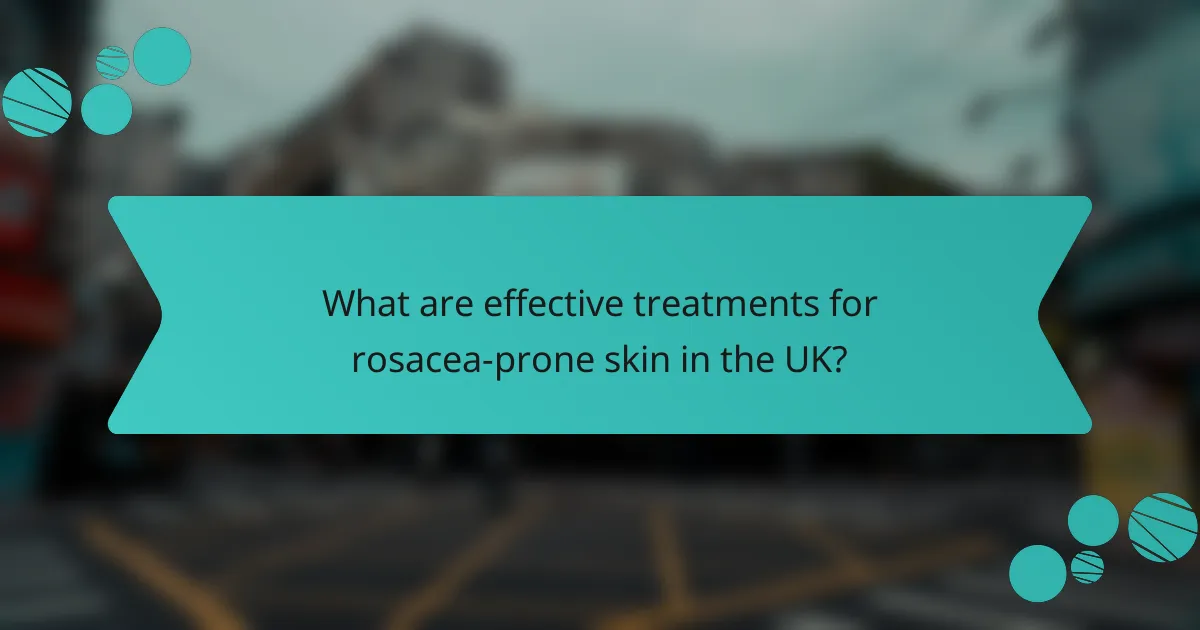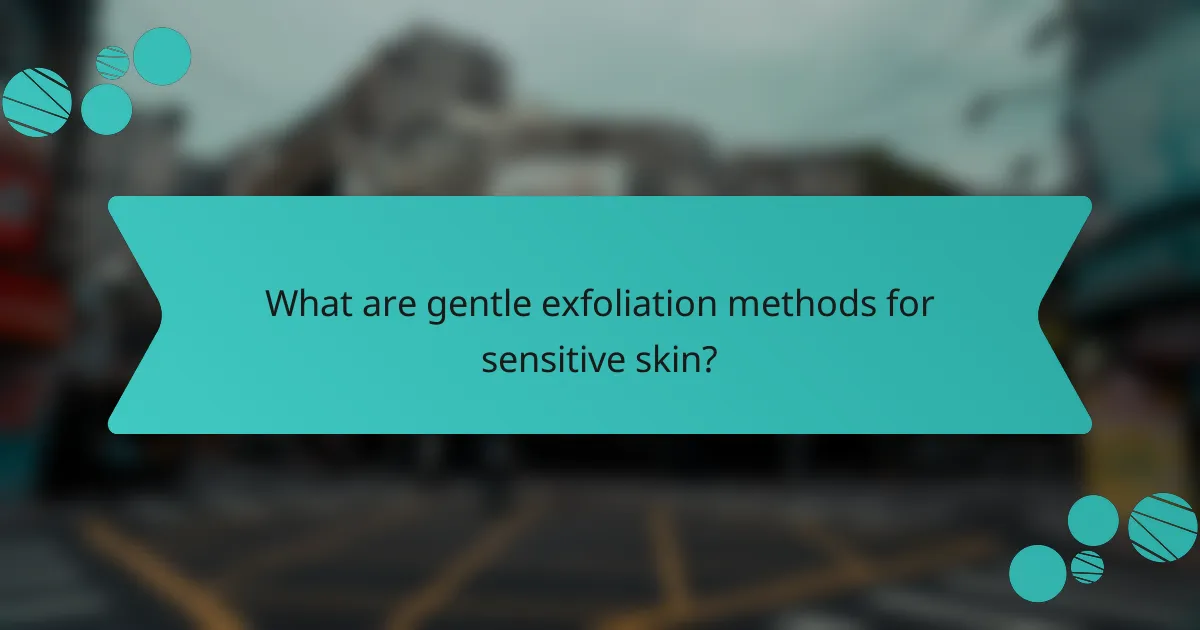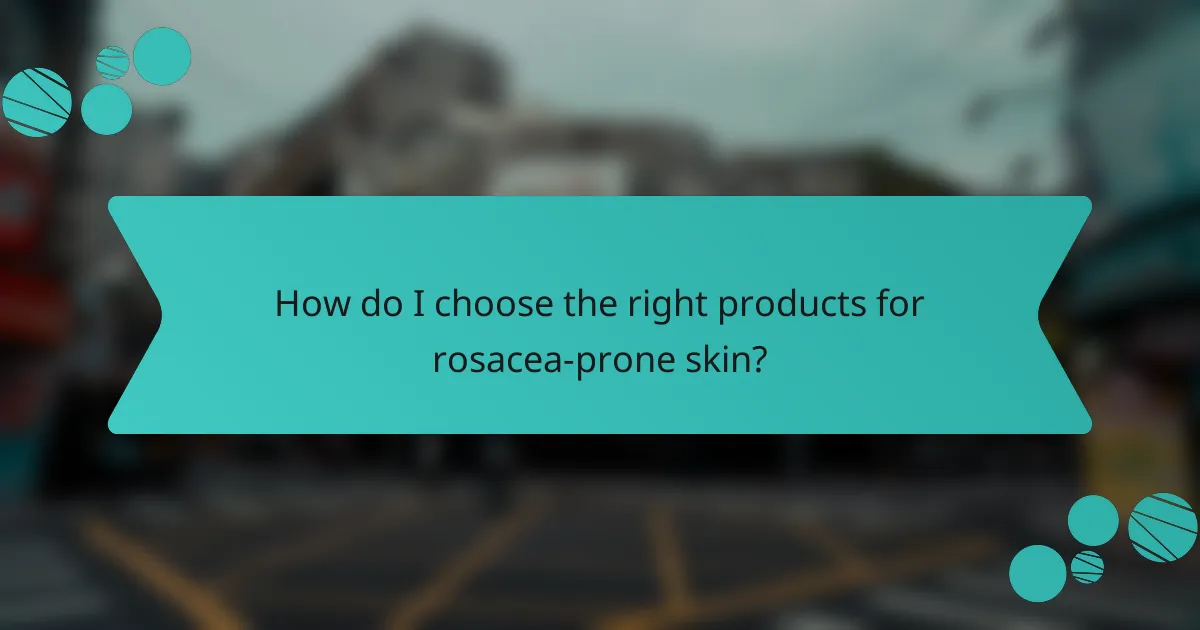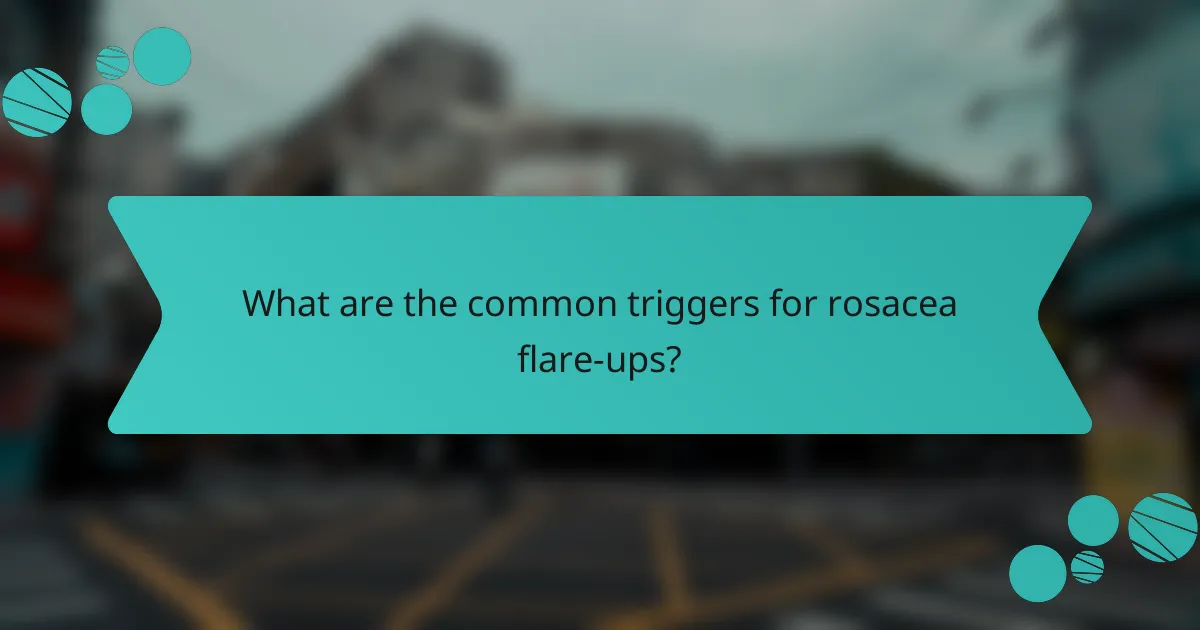Managing rosacea-prone skin requires a thoughtful regimen focused on reducing redness and soothing irritation. Incorporating gentle exfoliation and specific calming ingredients like aloe vera, chamomile extract, and niacinamide can significantly enhance skin comfort and appearance. By selecting the right products and techniques, you can effectively minimize the visible signs of rosacea while supporting your skin’s health.

What are effective treatments for rosacea-prone skin in the UK?
Effective treatments for rosacea-prone skin in the UK focus on reducing redness, soothing irritation, and promoting gentle exfoliation. Options include topical medications, laser therapies, and prescription creams specifically designed to address symptoms of rosacea.
Topical medications like metronidazole
Topical medications, such as metronidazole, are commonly prescribed for rosacea. They work by reducing inflammation and redness associated with the condition. Typically, these creams or gels are applied once or twice daily to the affected areas.
When using metronidazole, it’s important to apply a thin layer and avoid contact with the eyes. Users may notice improvements within a few weeks, but consistency is key for optimal results.
Laser therapy options
Laser therapy is an effective treatment for reducing visible blood vessels and redness in rosacea-prone skin. Common types of laser treatments include pulsed dye lasers and intense pulsed light (IPL) therapy. These procedures target and diminish the appearance of redness by selectively heating the blood vessels.
Patients typically require multiple sessions to achieve desired results, with each session lasting about 30 minutes. While laser therapy can be effective, it may not be suitable for everyone, so consulting with a dermatologist is essential.
Prescription creams for redness
Prescription creams specifically formulated for redness, such as brimonidine and oxymetazoline, can provide temporary relief from flushing and persistent redness. These creams work by constricting blood vessels, thereby reducing the appearance of redness.
Application is usually recommended once daily, and effects can last for several hours. However, users should be aware of potential side effects, such as skin irritation, and should discuss these with their healthcare provider before starting treatment.

How can I reduce redness in rosacea-prone skin?
To reduce redness in rosacea-prone skin, focus on using products that contain soothing ingredients and gentle formulations. Incorporating specific makeup techniques and skincare products can help minimize the appearance of redness effectively.
Use of green-tinted primers
Green-tinted primers are designed to neutralize redness on the skin’s surface. The green color counteracts the red tones, creating a more balanced complexion. When selecting a primer, look for lightweight, hydrating formulas that won’t irritate sensitive skin.
Apply the primer before your foundation to achieve a smooth, even base. Use a small amount and blend it gently to avoid disrupting the skin barrier. Avoid heavy or thick formulations, as they can exacerbate redness instead of alleviating it.
Incorporating calming serums
Calming serums can significantly soothe rosacea-prone skin and reduce redness. Ingredients like chamomile, aloe vera, and niacinamide are known for their anti-inflammatory properties. Look for serums that are fragrance-free and specifically formulated for sensitive skin.
Apply these serums after cleansing and before moisturizing. A few drops are usually sufficient; gently pat them into the skin rather than rubbing. Regular use can help improve skin texture and reduce overall redness over time.

What soothing components should I include in my skincare regimen?
In a skincare regimen for rosacea-prone skin, incorporating soothing components is essential for reducing redness and irritation. Key ingredients like aloe vera, chamomile extract, and niacinamide can provide hydration, calming effects, and support for the skin barrier.
Aloe vera for hydration
Aloe vera is renowned for its hydrating properties, making it an excellent choice for rosacea-prone skin. It contains polysaccharides that help retain moisture and soothe inflammation, providing relief from dryness and irritation.
When selecting aloe vera products, look for those with a high concentration of pure aloe vera gel. Apply it generously to affected areas to maximize hydration and promote a calming effect on the skin.
Chamomile extract for calming
Chamomile extract is effective in calming redness and irritation associated with rosacea. It possesses anti-inflammatory properties that can help reduce swelling and soothe sensitive skin.
Consider using chamomile-infused creams or serums, particularly those labeled as hypoallergenic. These products can be applied daily to help maintain a calm complexion and minimize flare-ups.
Niacinamide for barrier support
Niacinamide, or vitamin B3, is beneficial for strengthening the skin barrier and improving overall skin texture. It helps to reduce redness and enhance the skin’s resilience against environmental stressors.
Incorporate niacinamide into your routine through serums or moisturizers with concentrations around 5-10%. Regular use can lead to noticeable improvements in skin tone and a reduction in rosacea symptoms.

What are gentle exfoliation methods for sensitive skin?
Gentle exfoliation methods for sensitive skin focus on removing dead skin cells without causing irritation or redness. These methods often utilize natural enzymes or mild chemical agents that are less abrasive than traditional scrubs.
Enzyme exfoliants like papaya
Enzyme exfoliants, such as those derived from papaya, work by breaking down the proteins in dead skin cells, allowing for a gentle removal without physical scrubbing. This method is particularly beneficial for rosacea-prone skin, as it minimizes the risk of inflammation.
When using papaya enzyme products, look for those with a concentration of around 5-10% for effective results. Apply them once or twice a week, depending on your skin’s tolerance, and always follow with a soothing moisturizer.
Chemical exfoliants with lactic acid
Chemical exfoliants containing lactic acid are another effective option for sensitive skin. Lactic acid is an alpha hydroxy acid (AHA) that gently dissolves the bonds holding dead skin cells together, promoting a smoother complexion without harsh scrubbing.
For optimal use, select products with a low concentration of lactic acid, typically between 5-10%, and apply them once a week. Be cautious of potential irritation; always perform a patch test before full application and follow up with a calming serum or moisturizer to maintain hydration.

How do I choose the right products for rosacea-prone skin?
Choosing the right products for rosacea-prone skin involves selecting gentle, soothing formulations that reduce redness and irritation. Look for products that prioritize non-comedogenic and fragrance-free ingredients to support your skin’s health.
Look for non-comedogenic labels
Non-comedogenic products are formulated to avoid clogging pores, which is crucial for rosacea-prone skin. Ingredients that are non-comedogenic help prevent breakouts and irritation, making them suitable for sensitive skin types.
When shopping, check the labels for terms like “non-comedogenic” or “won’t clog pores.” Common non-comedogenic ingredients include glycerin, hyaluronic acid, and certain oils like jojoba or argan oil. Avoid heavy creams that may exacerbate redness.
Check for fragrance-free formulations
Fragrance-free products are essential for rosacea-prone skin as fragrances can trigger flare-ups and irritation. Many skincare products contain synthetic fragrances that can be harsh on sensitive skin, so opting for fragrance-free options is a safer choice.
Look for products labeled as “fragrance-free” or “unscented.” These formulations often use natural ingredients that soothe the skin without the risk of irritation. Always perform a patch test when trying new products to ensure they do not provoke a reaction.

What are the common triggers for rosacea flare-ups?
Common triggers for rosacea flare-ups include environmental factors, certain foods, and lifestyle choices. Identifying and managing these triggers can significantly reduce redness and irritation associated with the condition.
Sun exposure
Sun exposure is a leading trigger for rosacea flare-ups, causing increased redness and irritation. Ultraviolet (UV) rays can damage the skin and exacerbate symptoms, making sun protection essential for those with rosacea-prone skin.
To minimize the risk, use a broad-spectrum sunscreen with an SPF of at least 30 daily, even on cloudy days. Wearing protective clothing, such as wide-brimmed hats and UV-blocking sunglasses, can further shield your skin from harmful rays.
Avoiding direct sunlight during peak hours, typically between 10 AM and 4 PM, can also help reduce flare-ups. If you must be outdoors, seek shade whenever possible to protect your skin from excessive sun exposure.
